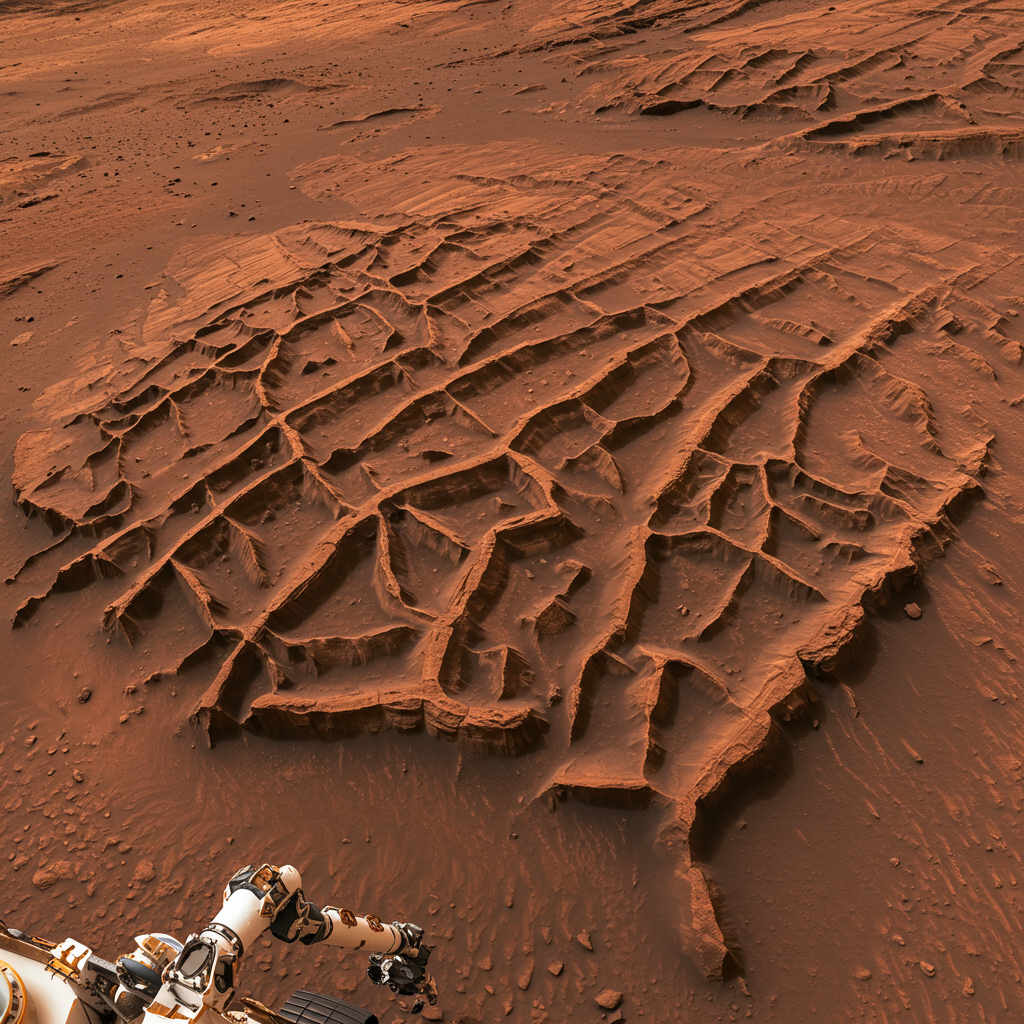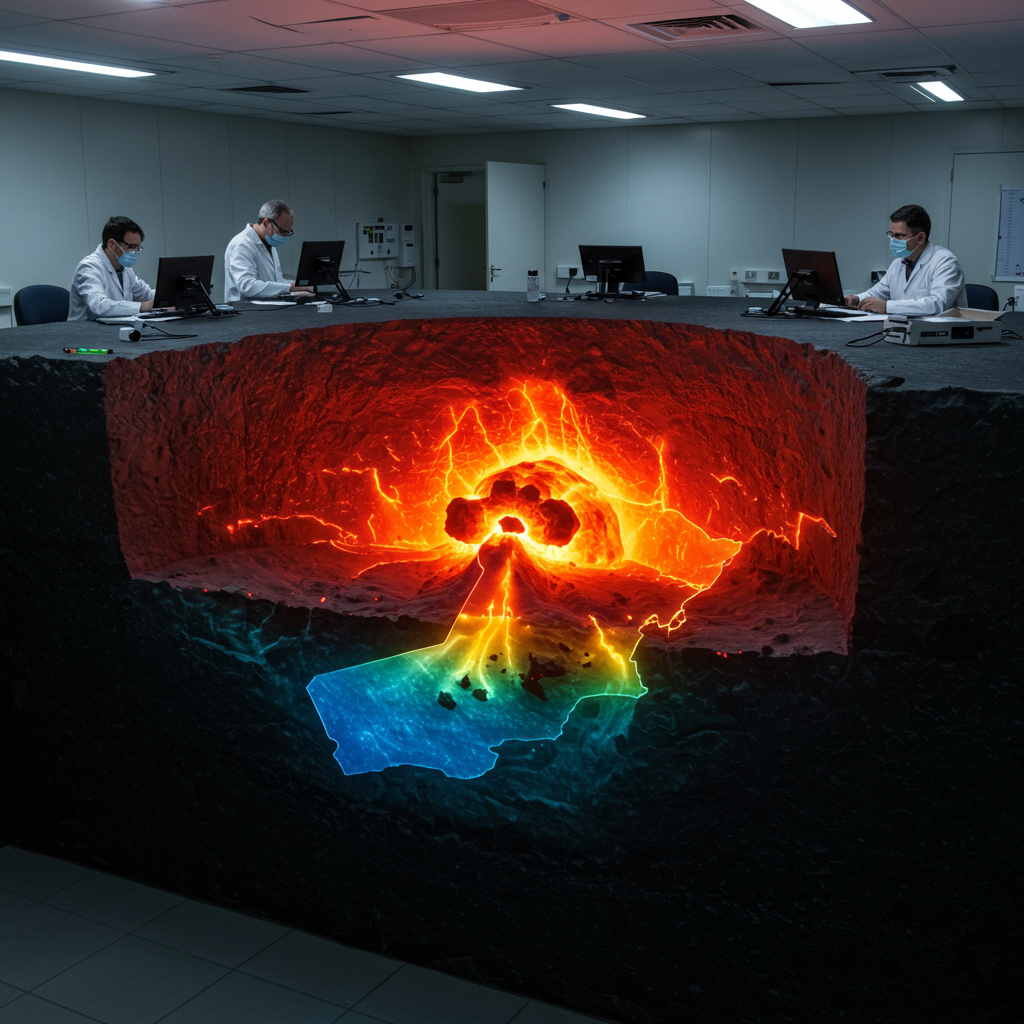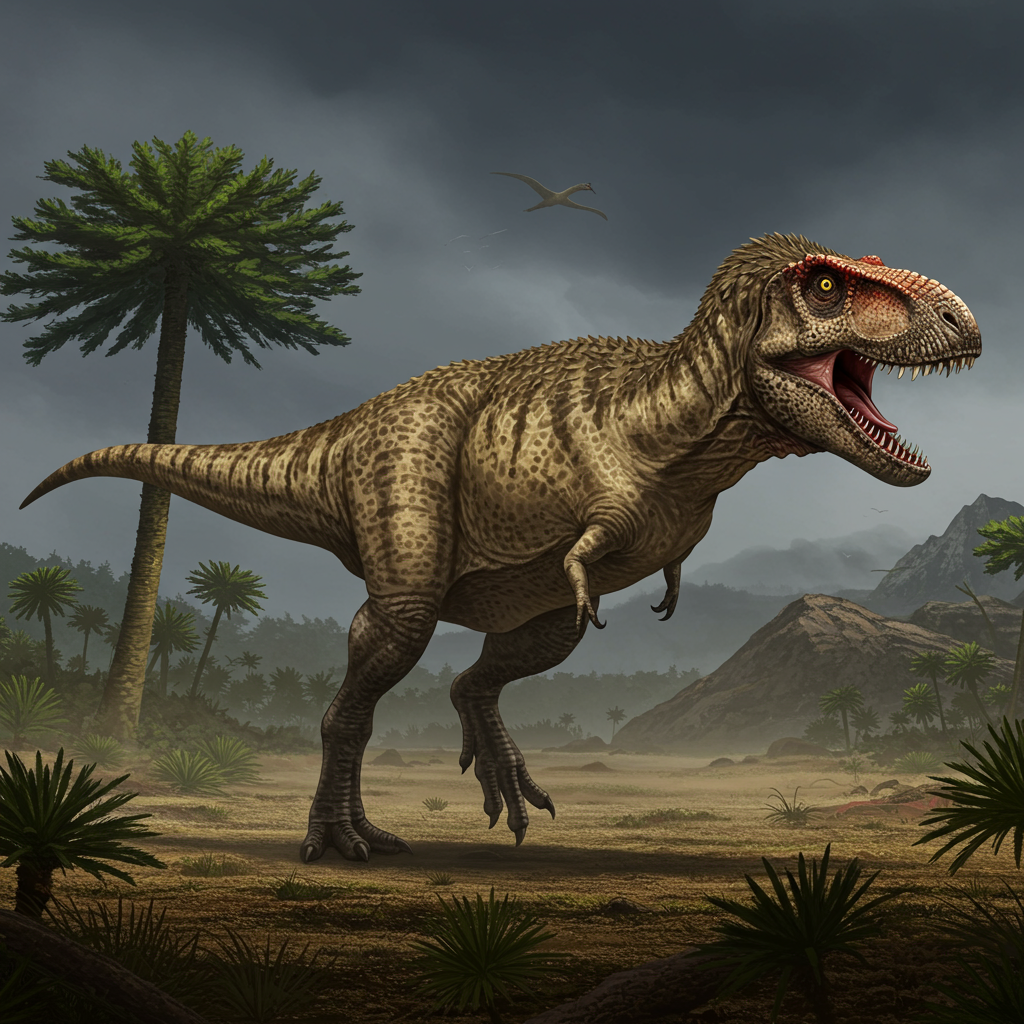Space | Astronomy | Planets | Mars
Mars Rover Snaps Stunning Close-Ups of Giant ‘Spiderweb’ Rocks
News
NASA’s Curiosity rover has captured the first-ever close-up images of striking geological features on Mars that, when viewed from orbit, uncannily resemble gigantic spiderwebs. These formations, known to scientists as “boxwork,” are intriguing mineral ridges that could unlock significant secrets about the Red Planet’s ancient watery past and its potential to have once supported life.
While appearing like the intricate work of colossal arachnids from afar, these Martian “spiderwebs” are purely geological in origin – intricate networks of mineral-rich rocks. Spanning impressive distances of up to 12 miles (20 kilometers) across, these criss-crossing patterns frequently dot parts of the Martian surface. Until recently, however, they had only been observed from the vantage point of orbiting satellites like NASA’s Mars Reconnaissance Orbiter (MRO).
What Are These Martian ‘Spiderwebs’?
These aren’t biological structures, but rather a type of geological feature called “boxwork.” On Earth, similar, though much smaller, boxwork formations are found in places like cave walls, created by minerals crystallizing within fractures in rock. The Martian versions are hypothesized to have formed through a comparable mechanism, but on a vastly different scale.
Scientists propose that billions of years ago, ancient groundwater or possibly even Martian seawater permeated through cracks and fissures deep underground. As this mineral-rich water flowed, it deposited dissolved minerals, which gradually hardened and became cement-like within these fractures. Over immense periods, Martian winds eroded the softer surrounding rock, leaving behind the more resistant, mineralized ridges, creating the complex, web-like patterns we see today. These features might represent the final stages of Mars’ ancient wet period, forming as mineral-laden water flowed from elevated regions like Mount Sharp.
Curiosity’s Target: A Unique Patch on Mount Sharp
Curiosity is currently investigating a distinctive patch of these boxwork ridges located on the slopes of Mount Sharp, a 3.4-mile-tall (5.5 kilometers) mountain at the center of Gale Crater, where the rover landed in 2012. The rover embarked on its journey to this area in late 2024 and arrived earlier this month, making these features a high-priority scientific target. Experts are particularly interested because this specific boxwork patch appears nowhere else on Mount Sharp, a geological puzzle yet to be fully understood.
This new phase of exploration follows Curiosity’s study of the nearby Gediz Vallis channel, where the rover spent about a year. During that time, it made fascinating discoveries, including unexpected pure sulfur crystals – a finding with no clear explanation based on typical volcanic or hot spring activity seen on Earth, highlighting the unique geology of the region.
First Close-Ups and Key Discoveries
On June 23, 2024, NASA released the initial close-up images captured by Curiosity, offering unprecedented views of the boxwork textures. Beyond imagery, the rover also analyzed rock samples from the vicinity of the ridges.
Analysis of these samples revealed veins containing calcium sulfate, a salty mineral typically associated with groundwater deposits. Finding this mineral at such a high elevation on Mount Sharp was described as “really surprising” by Abigail Fraeman, Curiosity’s deputy project scientist based at NASA’s Jet Propulsion Laboratory. This unexpected discovery further underscores the complex history of water movement within the mountain.
Unlocking Secrets of Water and Potential Life
Scientists are immensely hopeful that studying the boxwork up close will provide critical insights into Mars’ ancient watery past, before the planet lost most of its surface water to solar radiation. These formations, believed to require vast amounts of water (estimated potentially over 113 billion gallons) for their creation, could offer clues about the planet’s hydrogeology and potentially even shed light on the giant subsurface ocean recently theorized to exist deep beneath the crust.
Furthermore, the boxwork structures are considered a prime target in the ongoing search for evidence of past extraterrestrial life. Kirsten Siebach, a Curiosity mission scientist at Rice University, highlights that the minerals within these ridges crystallized underground, in an environment that would have been warmer and contained flowing salty liquid water. This subsurface setting is considered highly favorable for preserving potential traces of ancient microbial life. As Siebach notes, early microbes on Earth could have thrived in similar conditions, making this a profoundly exciting location to explore for astrobiological clues.
This potential for past habitability is supported by other findings, including recent analysis of a Martian meteorite (NWA 7034) on Earth. This analysis revealed evidence of hot water activity and hydrothermal systems present on Mars over 4 billion years ago, suggesting that conditions conducive to life existed very early in the planet’s history.
The detailed study of these unique ‘spiderweb’ boxwork features by the Curiosity rover marks a significant step in piecing together the complex environmental history of Mars and evaluating its potential to have once been a home for life.




